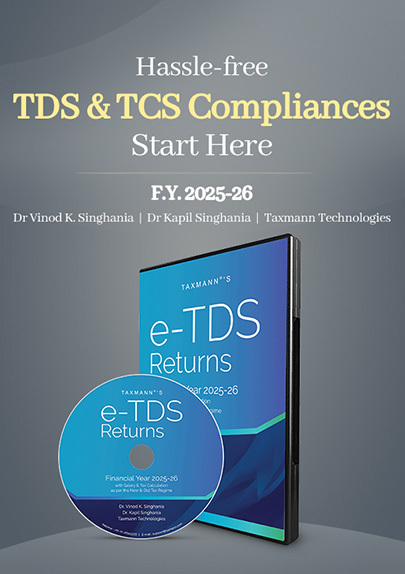Section 263 Order Invalid Without Showing Revenue Prejudice | HC
- Blog|News|Income Tax|
- 2 Min Read
- By Taxmann
- |
- Last Updated on 23 June, 2025

Case Details: Deloitte Haskins & Sells vs. Assistant Commissioner of Income-tax - [2025] 175 taxmann.com 718 (Madras)
Judiciary and Counsel Details
- K.R. Shriram, CJ. & Sunder Mohan, J.
-
J.D. Mistri, Sr. Counsel for the Appellant.
-
Niraj Sheth, R. Venkatanarayanan, S.P. Chidambaram, Ms Subbaraya Aiyar & T. Ravikumar, Sr. Standing Counsel for the Respondent.
Facts of the Case
The assessee was a partnership firm of Chartered Accountants formed with 20 partners. It filed its return of income for the relevant assessment year, declaring a total income of Rs. 17.71 crores after deducting salary payments to some of the partners. While computing its total income, the assessee claimed a deduction of Rs. 3.24 crores, being salary paid to its partners, under section 40(b).
The Assessing Officer (AO) passed the assessment order under section 143(3), determining the assessee’s total income at Rs. 17.71 crores. After verifying the partnership deeds, AO accepted the assessee’s status as a partnership firm. Subsequently, the Commissioner issued a notice under section 263. He alleged that by amending the partnership deed to include one more partner, the status of the assessee had changed from a partnership firm to an Association of Persons (AOP). Thus, the salary paid to the partners was not allowable as a deduction under section 40(b).
On appeal, the Tribunal remanded the matter to the AO to pass a fresh assessment order. The matter reached the Madras High Court.
High Court Held
The Court held that the Commissioner stated that amending the partnership deed to include one more partner (MD) would take the number of partners beyond 20, and the assessee’s status would change from that of a partnership firm to that of an AOP. According to the Commissioner, MD was acting in two capacities, i.e., on his behalf and as a partner in a representative capacity of DM and, therefore, should be counted as two in numbers, thereby adding one more partner to the existing strength of 20 partners. The stand taken by the Commissioner was erroneous.
The notice issued under section 263 did not state in what way there was any prejudice to the interests of the revenue. It did not suggest in what way there was any prejudice to the Revenue. No figures have been given, even if prejudice to the revenue is to be reckoned regarding the actual loss to the exchequer. This indicated that, as of that date, the Commissioner had no clear idea of the difference in tax effect if the assessee was taxed as an AOP instead of a partnership firm. Accordingly, the Commissioner was not justified in his view.
List of Cases Reviewed
- Venkata Krishna Rice Co. v. CIT [1987] 30 Taxman 528/163 ITR 129 (Madras) [para 14]
- Rashik Lal & Co. v. CIT [1998] 96 Taxman 16/229 ITR 458 (SC) [Para 20] Followed
- Deloitte Haskins & Sells vs. Deputy Commissioner of Income-tax, Range -I [2013] 36 taxmann.com 349 (Chennai – Trib.)/[2015] 153 ITD 275 (Chennai – Trib.)[04-07-2013][Para 24] Set aside
List of Cases Referred to
- Venkata Krishna Rice Co. v. CIT [1987] 30 Taxman 528/163 ITR 129 (Madras) (para 14)
- Rashik Lal & Co. v. CIT [1998] 96 Taxman 16/229 ITR 458 (SC) (para 20).
Disclaimer: The content/information published on the website is only for general information of the user and shall not be construed as legal advice. While the Taxmann has exercised reasonable efforts to ensure the veracity of information/content published, Taxmann shall be under no liability in any manner whatsoever for incorrect information, if any.

Taxmann Publications has a dedicated in-house Research & Editorial Team. This team consists of a team of Chartered Accountants, Company Secretaries, and Lawyers. This team works under the guidance and supervision of editor-in-chief Mr Rakesh Bhargava.
The Research and Editorial Team is responsible for developing reliable and accurate content for the readers. The team follows the six-sigma approach to achieve the benchmark of zero error in its publications and research platforms. The team ensures that the following publication guidelines are thoroughly followed while developing the content:
- The statutory material is obtained only from the authorized and reliable sources
- All the latest developments in the judicial and legislative fields are covered
- Prepare the analytical write-ups on current, controversial, and important issues to help the readers to understand the concept and its implications
- Every content published by Taxmann is complete, accurate and lucid
- All evidence-based statements are supported with proper reference to Section, Circular No., Notification No. or citations
- The golden rules of grammar, style and consistency are thoroughly followed
- Font and size that’s easy to read and remain consistent across all imprint and digital publications are applied



 CA | CS | CMA
CA | CS | CMA
